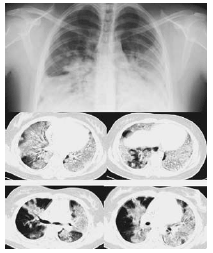Rads urge cautious CT use for swine flu workup
Findings of a Canadian study suggest CT might be better than the standard chest x-ray to show the extent and characterization of H1N1 flu.
Findings of a Canadian study suggest CT might be better than the standard chest x-ray to show the extent and characterization of H1N1 flu. But imaging experts caution physicians not to read too much into it.

A retrospective review of seven cases led Dr. Amr M. Ajlan and colleagues at the Vancouver General Hospital in British Columbia to conclude that CT could help the prospective diagnosis of H1N1. The study appeared online Oct. 21 in the American Journal of Roentgenology. Young children and adolescents carry the highest risk from the virus. Because of the radiation doses involved, any new large-scale application of CT scans needs to be carefully evaluated, said David J. Brenner, Ph.D., a professor of radiation biophysics at Columbia University.
The Reading Room Podcast: Current Perspectives on the Updated Appropriate Use Criteria for Brain PET
March 18th 2025In a new podcast, Satoshi Minoshima, M.D., Ph.D., and James Williams, Ph.D., share their insights on the recently updated appropriate use criteria for amyloid PET and tau PET in patients with mild cognitive impairment.
Meta-Analysis Shows Merits of AI with CTA Detection of Coronary Artery Stenosis and Calcified Plaque
April 16th 2025Artificial intelligence demonstrated higher AUC, sensitivity, and specificity than radiologists for detecting coronary artery stenosis > 50 percent on computed tomography angiography (CTA), according to a new 17-study meta-analysis.